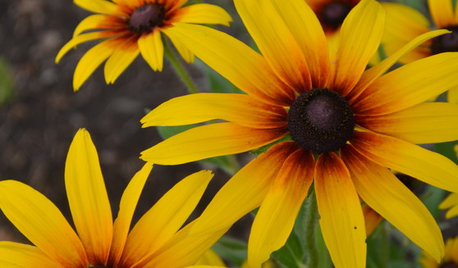Glyphosate damage to fruit trees
ltilton
9 years ago
Related Stories

FARM YOUR YARDIf You Have Room for Only One Fruit Tree ...
Juice up a small garden with one of these easier-care or worth-the-effort fruit trees for a mild climate
Full Story
EDIBLE GARDENSGrow Plum Hybrids for Your Favorite Fruit Flavors
Plums are cozying up with apricots, peaches and even cherries — here’s how to grow these hybrids for the best aspects of each
Full Story
GARDENING GUIDESGreat Design Plant: Grow Blueberries for Their Fruit and More
Eastern gardeners should consider growing blueberry plants for their delicious fruits, bee-friendly spring blooms and brilliant fall foliage
Full Story
EDIBLE GARDENSHow to Add an Apple Tree to Your Edible Garden
Readily available, beautiful and fragrant, apple trees offer four-season interest along with crisp, juicy fruit
Full Story
GARDENING GUIDESHow to Keep Your Citrus Trees Well Fed and Healthy
Ripe for some citrus fertilizer know-how? This mini guide will help your lemon, orange and grapefruit trees flourish
Full Story
EDIBLE GARDENSHow to Grow Your Own Peaches and Nectarines
Make gardening a little sweeter with these juicy fruits, which you can eat after plucking or preserve for later
Full Story
LANDSCAPE DESIGNPretty Trees for Patios, Paths and Other Tight Spots
Choose trees for their size, shape and rate of growth — or shape them to fit your space. Here's how to get started
Full Story
GARDENING GUIDESWhen and How to Plant a Tree, and Why You Should
Trees add beauty while benefiting the environment. Learn the right way to plant one
Full Story
GARDENING GUIDESSouthwest Gardener's July Checklist
Hold on to your hat and prune those tree branches; monsoon season means damage prevention is key
Full Story
ARBOR DAY8 Reasons to Plant a Great Tree
Beauty is its own reward, but the benefits of planting the right tree in the right place go way beyond looks
Full Story






alan haigh
jean001a
Related Professionals
Glendora Landscape Architects & Landscape Designers · Graham Landscape Architects & Landscape Designers · Otsego Landscape Architects & Landscape Designers · Tempe Landscape Contractors · Williamsburg Landscape Contractors · Clearlake Landscape Contractors · Concord Landscape Contractors · Maywood Landscape Contractors · Nashua Landscape Contractors · Newberg Landscape Contractors · Salem Landscape Contractors · Waldorf Landscape Contractors · Wayland Landscape Contractors · Forest Hill Landscape Contractors · Selma Landscape Contractorsalan haigh
marc5
fireduck
alan haigh
alan haigh
fireduck
spartan-apple
ltiltonOriginal Author
alan haigh
fireduck
bonnan
lazy_gardens
ltiltonOriginal Author
bob7557
olpea
bob7557
Toronado3800 Zone 6 St Louis